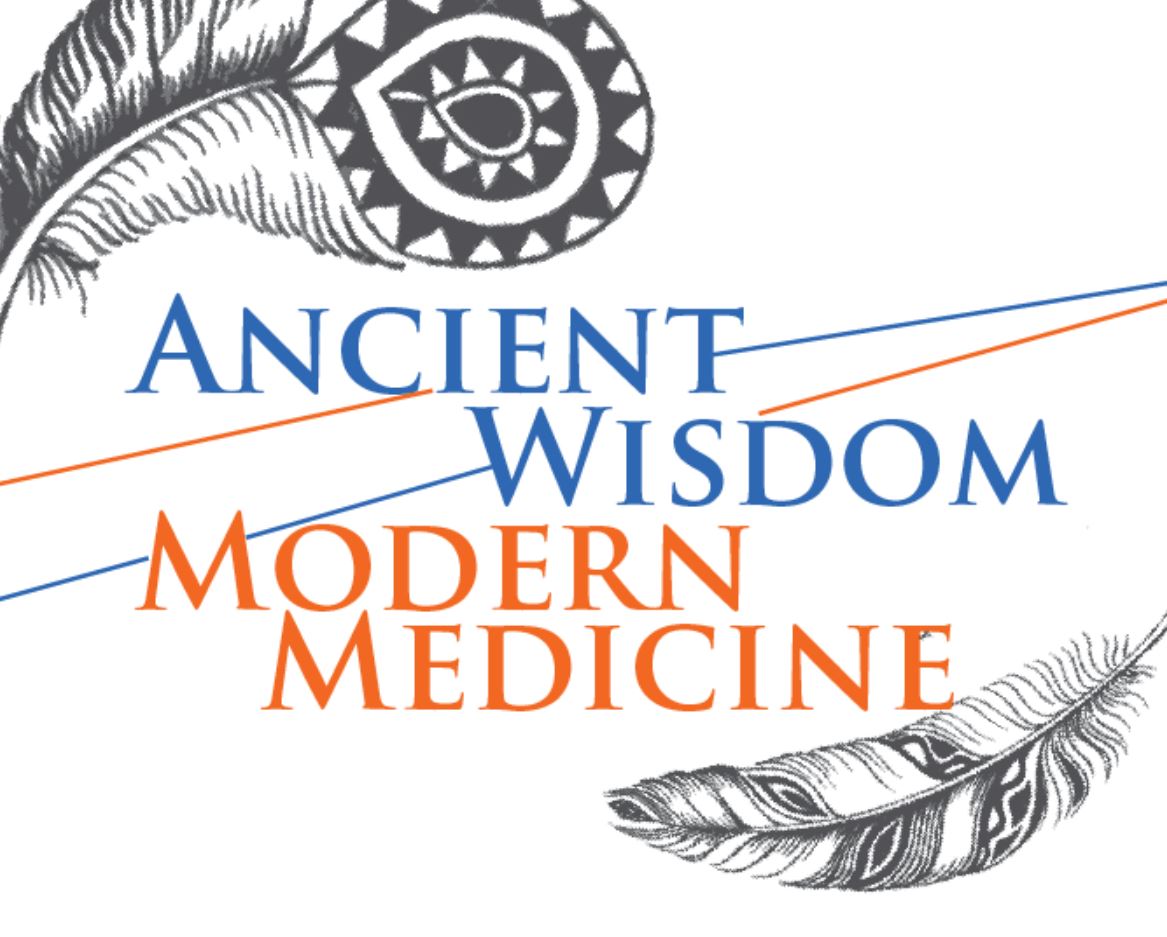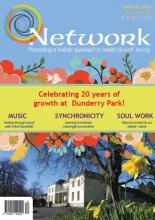Ancient Wisdom, Modern Medicine
by:
Martin Duffy
Published:
Sunday, October 1, 2017

Some say Shamanism is the oldest healing tradition on the planet, with varying thoughts on how far it goes back. What we do know is that our ancient ancestors, through a need for survival, discovered a way of healing and a way of connecting to what was around them. It seems to me that we are hard-wired to have this experience. It seems like it is an innate part of our nature to be able to get outside the everyday ego-mind consciousness and plug into something deeper.
Many people in the Western world think that is a difficult thing to do because we are so caught up in the left-brain cognitive way of viewing reality, but we all have those experiences anyway – whether that is in our dreams at night, or becoming lost in a daydream, or being awed by something amazing we see in nature. Shamanism is about doing that in a focused way, where you set an intention and you use some stimulation to move you into that state. Different cultures use the drum, the rattle, the didgeridoo, chanting and singing, and teacher plants. The idea is that you are stepping out of the mental cage we operate in, and open up to be enchanted by something beyond yourself.
I found that working as a psychotherapist I was working with what the person was presenting on a biographical level, and it was only when I expanded that model into the shamanic realms that I saw there was a bigger transpersonal story going. If a person comes with depression, it wasn’t just a biochemical experience that they were having, nor was it was just an emotional or psychological experience; there was always something bigger and deeper. And when we would get into that place where we were looking to find meaning in their suffering, and harvesting the teachings from their experience then everything begins to make sense.
In shamanic traditions it is important that the person is not just understood as an individual, they are connected to a network in their society as well as connected to their family lineage. Ancestral healing is very important in shamanism. And they are discovering this through science as well, in the field of epigenetics, where we can see that we inherit our physical characteristics, but we also can inherit much more. We can inherit memories of trauma, and generations later this can be manifesting in our current lives. One of the journeys we do in shamanism is to journey back and meet our ancestors to discover the power of our lineage. We often think of the defects we may have inherited, but it is really important to travel back to discover the power that we have from our ancestors too. In all shamanic cultures, working with the ancestors is vitally important because we are the ancestors of future generations to come.
As a psychotherapist, I notice that there is often one member of the family that is carrying the family pathology and when they realise that and work through it, it is a systemic thing, and the system often moves on or changes when they do it – those people are usually the shamans or healers in the family. It is not a nice position to be. Many of the traditions from classical shamanism have now found their way into modern psychotherapy and healing modalities. One of the people who had a huge influence on me was a Czech psychiatrist called Stan Grof who worked with psychedelics a lot in the 60s, when LSD-25 was used as a psychotherapeutic tool by doctors. Grof went on to develop Holotropic Breathwork because psychedelics became illegal. Holotropic Breathwork is an experience designed to facilitate catharsis of unconscious frozen experiences within the psyche, and release the energy associated with it – because normally it is leaking up into the psyche in the form of stress, anxiety, or depression, or in a physiological symptom, and it also takes a lot of psychic energy to repress these experiences so it can be difficult for you to fully experience life. An interesting thing happens when you discharge these ‘unexperienced experiences’, as Ivor Browne calls them, is that you no longer experience the symptoms. But I notice another interesting thing happens – it is like when you are holding that vibrational frequency within your unconscious, your everyday life is mirroring that frequency, so you draw people and experiences and situations into your life that match up with that frequency in your unconscious. It is like the psyche wants to heal itself so it draws situations to you to prod and poke at you to awaken and deal with it. And then when you do, a lot of that external stuff clears away. I have seen people make huge changes in their life.
When we look further back than that and look at the work of CG Jung, we see his life is very like a shamanic calling and some people would call him a modern western shaman. Jung’s basic journey was about the journey of the wounded healer. He based his whole teachings on that, and that is the archetype of the shaman – the wounded healer. We are all wounded in order to be incarnate. In my experience I have found that the wounded part of me is the best thing in me, it is what keeps me sharp, sane, and grounded. It stops me from getting too inflated about who I think I am or what I think I can do, and I have been humbled many times and forced to address the core wound in myself, and that humiliation - being humble in the presence of the wound – is the best thing that could happen.
If we look at a lot of the techniques being used in psychotherapy now we see the use of imagery and visualisation and ritual. There’s a great value to image, ritual, and ceremony. The mind can act as a healer or slayer, and the power of belief can be remarkably stupendous. For years we have had a culture of pilgrimage, in the middle ages a trip to visit the relics of a saint might provide healing properties. One of the things I notice is that if you set an intention to get to a place, and it is a struggle to get to, and that place then has an aura of power, and the person that you meet there has an aura of power, and if you have a belief in all of that, then you can get healed. From a scientific point of view it has nothing to do with the holy water, or the bones of the saint, or whatever, but it is your belief in that that works.
Shamans have always known that too, in the early days the anthropologists who worked with shamans called them tricksters or charlatans and say that they were hoodwinking the person. For example the shaman may do an extraction, where he seems to open up the person in surgery and pull out this grisly piece of meat, he would show it to the person and then throw it into a bucket. When scientists analysed the piece afterward it would turn out to be a chicken gizzard, but the person believed it was a tumour and then their tumour would disappear. So we are talking about the realms of perception, and the belief in curative power. In Ireland we had the shrines and the relics and holy water, and we have trees with rags and medals and crutches left at them. So what is doing that? Is it the power of spirit? Yes, maybe so. Is it the healing coming from a universal creator? Yes, maybe so. But is it also something to do with our belief system and perceptions, and to do with the fact that we have an inner healer within ourselves that becomes activated through those rituals and experiences? I think so. And I think that is what is so exciting about modern behavioural medicine, is that it is now starting to recognise and incorporate that into treatments.
I am heartened to see that even in general hospitals then complementary approaches are more accepted. You see mindfulness being taught in prisons and institutions. So there is the beginning of some recognition that our ancient ancestors really did have something very important and I am glad to see it being revived. It is not a case of one approach or the other, and I think that both sides are guilty of being too focused on that. You need the surgeon who knows what they are doing when they are going in, and the medical model is vitally important in that sense. And the shamanic model is also important in terms of helping the person understand and frame their experience. And what happens if you bring them together into a new model of healing, where there is modern scientific knowledge married to the ancient wisdom our ancestors had – I think if these truly come together then we will have a very powerful method of helping people heal themselves.
About the author:
Martin Duffy is the director of the Oaktree Charitable Trust, a nonprofit organisation that runs the Irish Centre for Shamanic Studies at Dunderry Park. Martin has worked as a mental health care professional since 1977. He is an accredited transpersonal /Jungian psychotherapist. Martin is available for one to one sessions for Transpersonal Psychotherapy, Soul retrieval and Shamanic Counselling and healing.
0469074455
In Issue:
Latest Issue
Upcoming Events
-
17/04/2020 to 26/04/2020
-
18/04/2020
-
23/04/2020
-
15/05/2020 to 23/05/2020
-
16/05/2020 to 17/05/2020
Recent Articles
Article Archive
- November 2011 (2)
- January 2012 (3)
- February 2012 (2)
- March 2012 (2)
- April 2012 (4)
- May 2012 (4)
- June 2012 (1)
- July 2012 (3)
- August 2012 (2)
- October 2012 (2)

